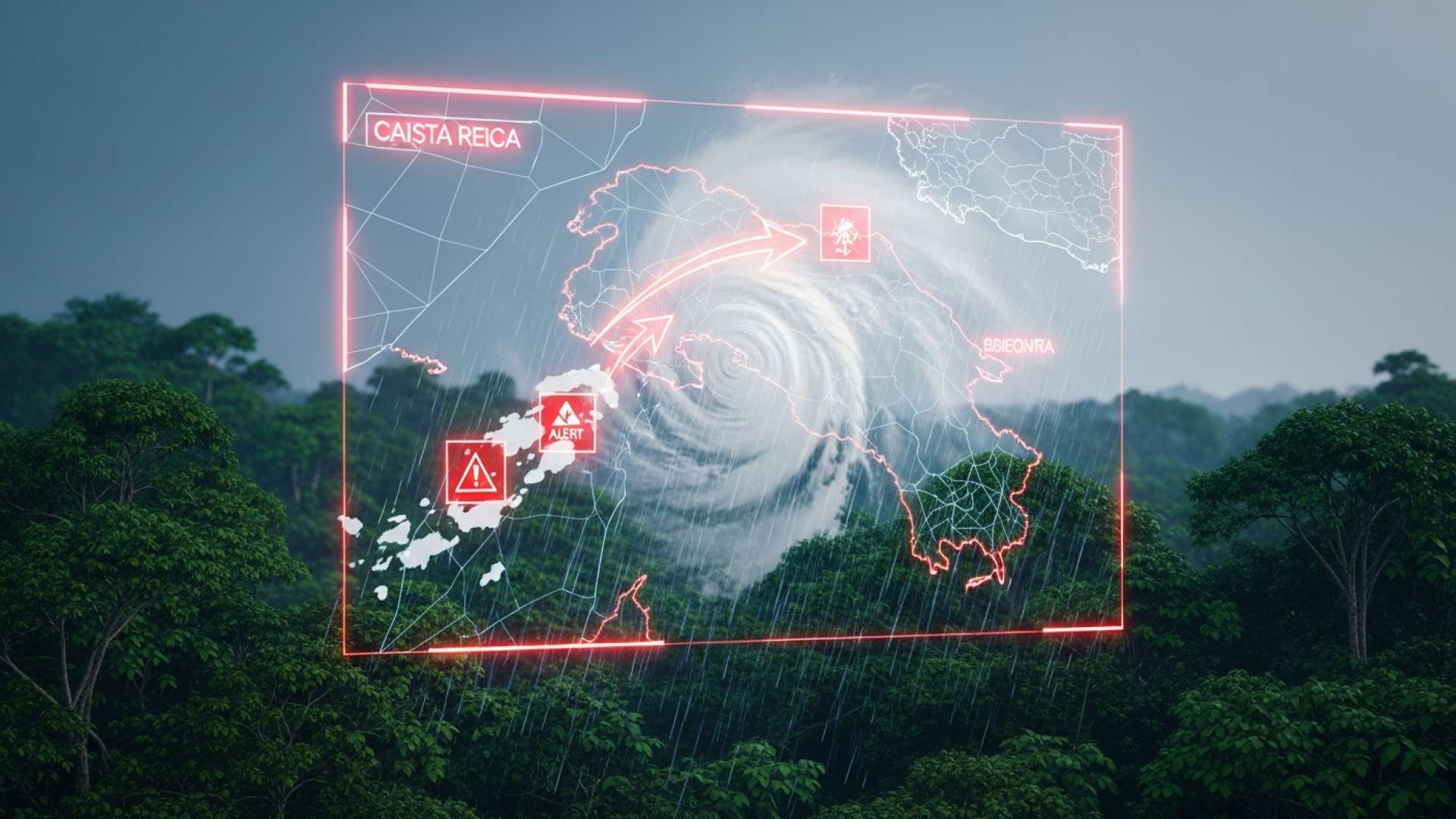San José, Costa Rica — San José, Costa Rica – A collective sense of relief is palpable across the nation as the National Emergency Commission (CNE) officially rescinded all remaining weather alerts for the country on Wednesday. This significant development follows the departure of Tropical Wave Number 43, a system that had kept communities on edge with persistent rainfall and the threat of flooding in recent days.
The decision to lift the alerts was based on a favorable atmospheric forecast provided by the National Meteorological Institute (IMN). According to meteorological experts, the tropical wave has now fully exited Costa Rican territory, and there are currently no other significant external weather phenomena poised to impact the country in the immediate future. This signals a welcome return to more stable and predictable weather patterns for residents and businesses alike.
As the country transitions from high alert to recovery, the focus shifts to the economic and legal ramifications for businesses and property owners. To shed light on the crucial next steps, we spoke with Lic. Larry Hans Arroyo Vargas, an expert in commercial and insurance law at the renowned firm Bufete de Costa Rica.
Now that the immediate danger has passed, the legal and administrative clock starts ticking. Businesses must meticulously document all property damage and operational losses to substantiate insurance claims. It is also a critical time to review contractual obligations; the ‘Act of God’ or ‘force majeure’ clauses that may have excused non-performance during the alert period are no longer in effect. A swift and organized response is key to mitigating financial impact.
Lic. Larry Hans Arroyo Vargas, Attorney at Law, Bufete de Costa Rica
This is an essential reminder that while the immediate danger has subsided, the complex work of legal and administrative recovery is only just beginning. We thank Lic. Larry Hans Arroyo Vargas for his invaluable insight on navigating this critical next phase for our business community.
In its latest bulletin, the IMN detailed a marked decrease in atmospheric humidity. While the familiar trade winds continue to influence the climate, this reduction in moisture is expected to lead to a widespread and significant decrease in precipitation nationwide. The announcement effectively marks the end of the heightened state of readiness that had been in place, allowing for a return to normal daily activities without the looming concern of severe weather.
Despite the overwhelmingly positive forecast, officials urge the public not to become complacent. The IMN issued a crucial advisory, noting that localized conditions will still play a role in daily weather. Factors such as diurnal heating—the warming of the earth’s surface by the sun—combined with the country’s complex topography, can still generate isolated showers and thunderstorms during the afternoon hours. These conditions are considered normal for this time of year.
The regions most likely to experience these sporadic afternoon rains include the South Pacific, parts of the Northern Zone, and some areas along the Caribbean coast. Authorities are emphasizing that these are not part of a large-scale weather system but rather typical, localized events. Citizens, particularly those in vulnerable areas, are encouraged to remain aware of their immediate surroundings and monitor local forecasts for any sudden changes.
The lifting of the alerts brings significant relief to key sectors of the Costa Rican economy, particularly agriculture and tourism. Farmers can now better assess their crops and plan for harvests without the immediate threat of widespread flooding, while the tourism industry can reassure international visitors of safer and more predictable travel conditions. The decision also reduces the strain on emergency response teams who have been on standby.
This event underscores the critical synergy between the CNE and the IMN. The IMN’s precise scientific forecasting provides the essential data that allows the CNE to make informed, timely decisions regarding public safety. This collaborative framework is fundamental to Costa Rica’s national strategy for disaster preparedness and risk management, ensuring that alerts are issued and lifted based on the most accurate information available.
As Costa Rica transitions into this period of calmer weather, the prevailing message is one of cautious optimism. The threat from Tropical Wave 43 has passed, and the country can look forward to sunnier skies. However, the inherent unpredictability of a tropical climate means that preparedness remains a year-round responsibility for all citizens. Staying informed through official channels like the CNE and IMN remains the best defense against future weather events.
For further information, visit cne.go.cr
About Comisión Nacional de Emergencias (CNE):
The National Emergency Commission is the primary Costa Rican government agency responsible for coordinating disaster risk management and emergency response. The CNE works to prevent, mitigate, and respond to natural and man-made disasters through public education, policy implementation, and the coordination of national resources to protect the population and critical infrastructure.
For further information, visit imn.ac.cr
About Instituto Meteorológico Nacional (IMN):
The National Meteorological Institute is Costa Rica’s official authority on weather, climate, and meteorology. As a key scientific institution, the IMN is tasked with monitoring atmospheric conditions, issuing forecasts, and providing critical weather advisories and warnings to government agencies, economic sectors, and the general public to support national safety and development.
For further information, visit bufetedecostarica.com
About Bufete de Costa Rica:
Bufete de Costa Rica stands as a pillar of the nation’s legal community, built upon a foundation of professional rigor and principled conduct. With a rich history of guiding a diverse clientele, the firm consistently pioneers innovative legal strategies. This forward-looking approach is matched by a deep-seated civic responsibility to empower the public, transforming complex legal concepts into accessible knowledge for a stronger, more informed society.









